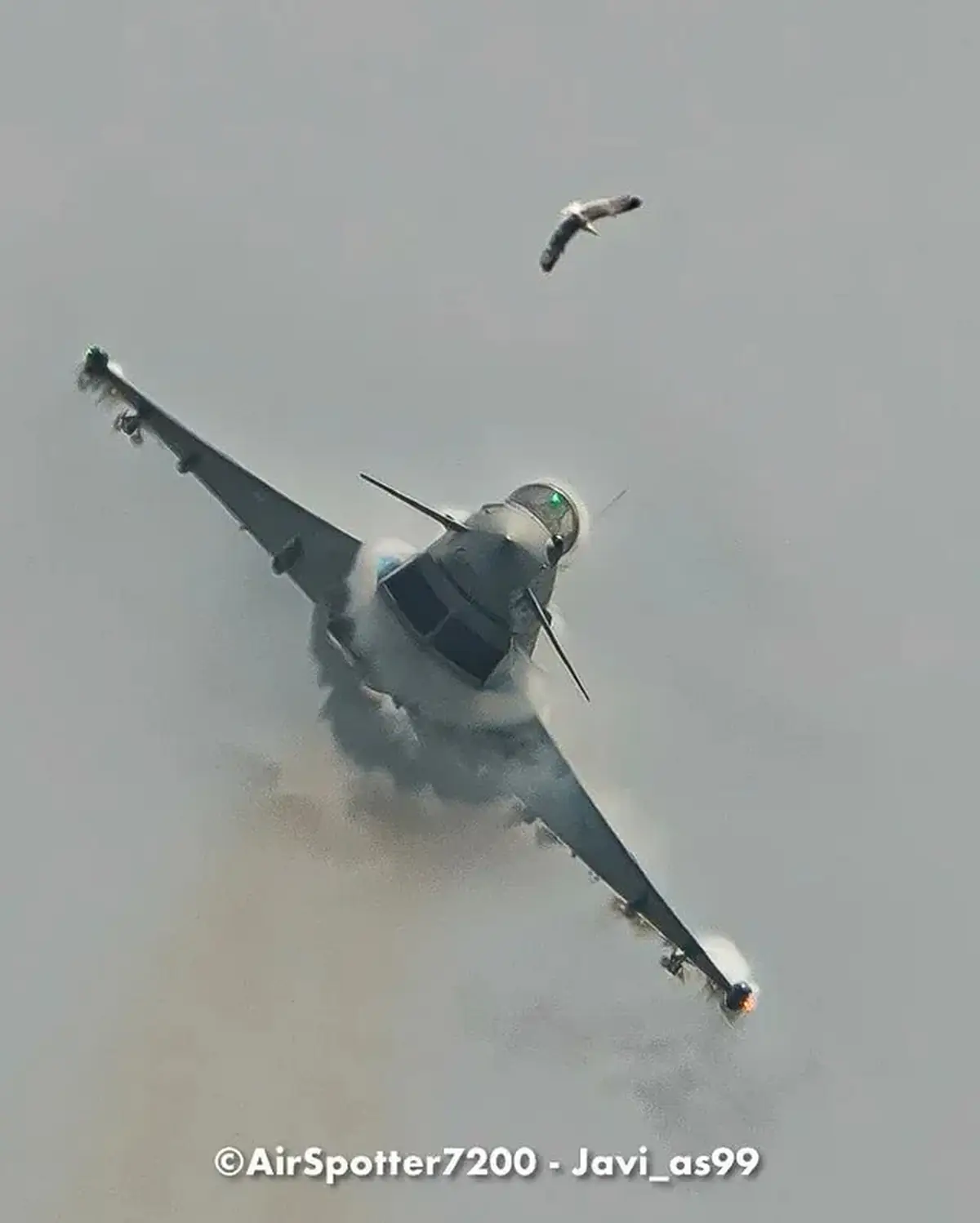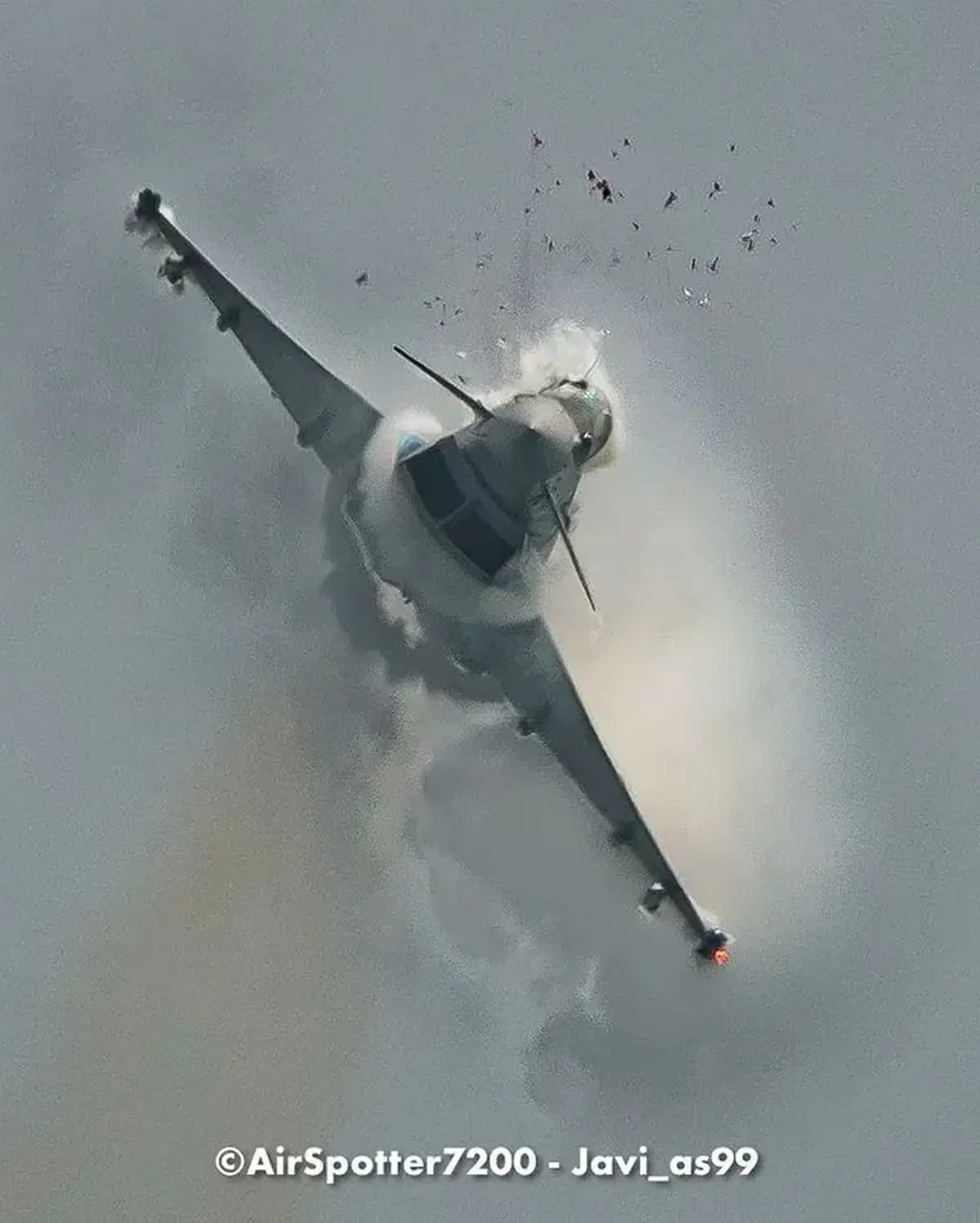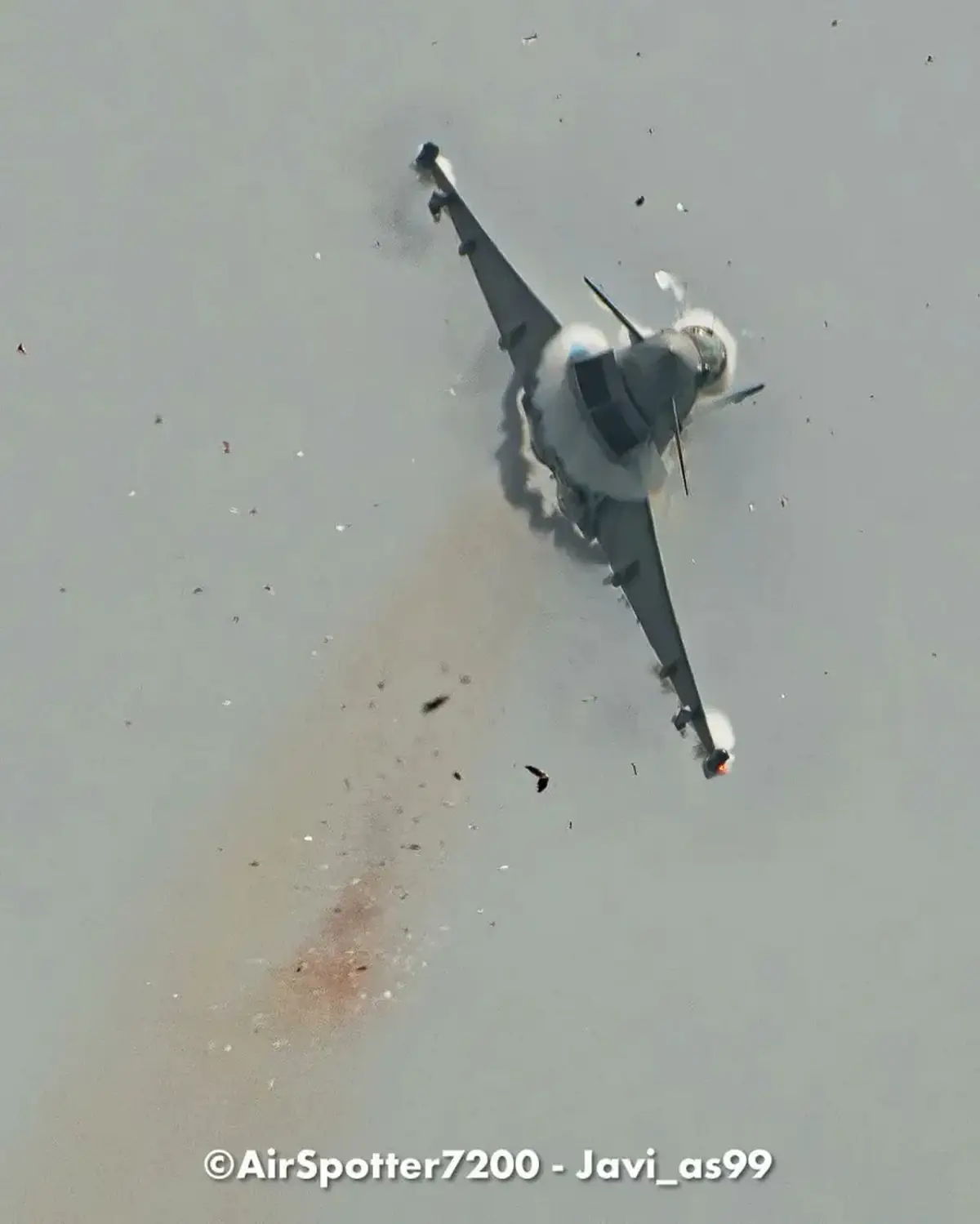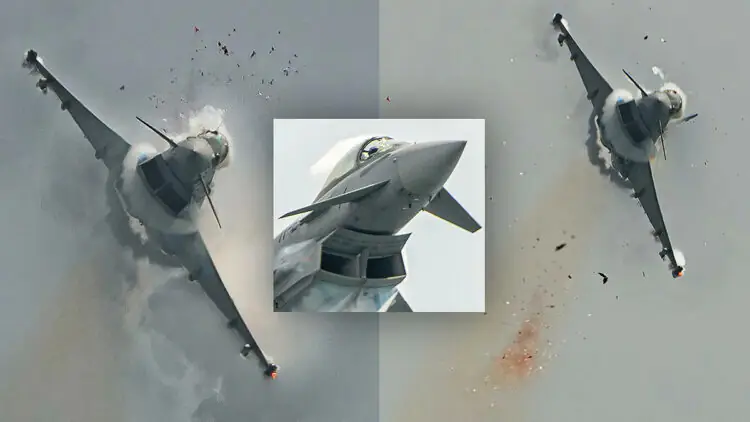Each year, tens of thousands of bird strikes occur around the world, but only a handful are ever caught on camera. This time, a Spanish photographer managed to capture a remarkable sequence of images showing the exact moment a bird collided with an EF2000 Eurofighter Typhoon – a multirole fighter jet operated by the Spanish Air Force. The aircraft was in the middle of a demanding demonstration flight when the incident happened. Bird strikes pose a potential threat to all aircraft, but the risk is especially high for military jets, particularly during low-altitude flights involving complex maneuvers near spectators.

The incident took place last month during the Aire 25 airshow in Spain. Javier Alonso de Medina Salguero was photographing the Eurofighter performance by the Spanish Eagle Patrol demonstration team from a spot near the viewing area. It was at that moment that he captured a sequence of images that left even seasoned aviation photographers stunned. Due to his busy schedule, he only recently shared the photos.
In the first image, as Salguero – whose work can be found on Instagram under air_spotter7200 – explained, a seagull is seen flying directly into the path of the aircraft. The second frame captures the moment of impact, with the bird striking the right side of the cockpit, resulting in a burst of feathers and debris as it essentially disintegrates on contact. The third photo shows the aftermath: a piece of the aircraft’s skin detaching from the cockpit and a vivid, blood-red trail made up of feathers and organic material from the bird.
“It caught me completely by surprise,” said Salguero, who was shooting with a Nikon 200–500mm telephoto lens. “We were watching the Eurofighter’s flight when it suddenly cut its performance short. Later, the radio announced that the jet had collided with a seagull, damaging the cockpit canopy. That’s when I went back through my shots and realized I had captured the entire sequence.”
According to the Spanish outlet Infodefensa, the aircraft involved was assigned to the 11th Wing, based at Morón Air Base. The Aire 25 airshow was held to mark the 40th anniversary of the Spanish Eagle Patrol and included an appearance by King Felipe VI. The bird strike occurred while the fighter jet was performing aerobatic maneuvers. A video from the event also shows the moment of impact, though in less detail than the still images.

Following the incident, the aircraft immediately withdrew from the airshow and flew to San Javier Air Base, where a Spanish Air Force maintenance team was dispatched to assess the damage, according to reports.
Fortunately, the pilot was unharmed. However, aviation history is filled with cases where bird strikes have had far more serious consequences, sometimes leading to fatal accidents or emergency evacuations. One of the most well-known examples occurred on January 15, 2009, when US Airways Flight 1549 lost power in both engines after colliding with a flock of wild geese. The pilot, Chesley “Sully” Sullenberger, managed to safely land the aircraft on the Hudson River, saving all 155 people on board. The next day, the plane’s wreckage was still visible floating near Battery Park City as the investigation began. Thanks to Sullenberger’s skill and calm under pressure, the incident became a landmark case of aviation professionalism and heroism.
As noted earlier, modern fighter jets are particularly vulnerable to bird strikes. Single-engine aircraft are at especially high risk, as a collision with a large bird can lead to total engine failure – with little to no time for the pilot to respond at low altitudes. Even twin-engine jets aren’t immune: if birds strike both engines or damage critical systems, the consequences can still be severe.
Given the supersonic speeds at which these aircraft operate and the high physical and cognitive demands on pilots during combat or demonstration missions, the chance of spotting a bird in time to avoid a collision is extremely low. Analysis of video footage from various incidents suggests that in most cases, avoiding impact is virtually impossible. In fact, sometimes it’s not the strike itself but the pilot’s reaction to it that ultimately leads to an accident.

Bird strikes pose a systemic threat to military aviation. According to the Pentagon’s Bird/Wildlife Aircraft Strike Hazard (BASH) prevention program, between 2007 and 2016, the U.S. Air Force and Navy recorded an average of 5,600 bird strikes per year. The total damage from these incidents amounted to around $400 million.
The Eurofighter pilot was fortunate – he managed to land safely. The work of photographer Salguero also turned out to be a success. Although his photos were published with some delay, they quickly went viral. “I never expected that so many people would see my photos,” the photographer admitted. As for the delayed release, his explanation was quite simple: “I was supposed to post them earlier. But I just couldn’t find the time.”
Source: TWZ









